Back and Forth, Between Names:
An exhibition
about bodies
of water
July 6 - August 25, 2024
Free & Open to the public
Saturdays & Sundays 1:00 - 5:00 pm
& by appointment
Opening Reception
Saturday July 6, 4:00 - 7:00 pm
Extended hours for Upstate Art Weekend
Friday July 19 - Sunday July 21, 12:00 - 5:00 pm
Programming:
August 4, 2:00pm— Ink Workshop with Suzy Sureck
August 18, 5:00pm — performance of To Cleanse the River by Koyoltzintli
August 24, 2:00pm — performance of Glacier Elegy Newburgh by Jaanika Peerna followed by a closing reception
PROGRAMMING DETAILS CAN BE FOUND HERE.
The exhibition is curated by Alison McNulty and includes works by:
Rachel Olivia Berg
Eliza Evans
Matt Frieburghaus
Koyoltzintli
Carmen Lizardo
Lauren Rosenthal McManus
Renana Neuman
Jaanika Peerna
Valerie Piraino
Adie Russell
Sarah Cameron Sunde
Suzy Sureck
Back and Forth, Between Names explores the pervious boundaries and shifting identities of bodies comprised of water. Works across media invite viewers to consider water as material, collaborator, place, and metaphor, communicating water’s agency and animacy in its fluidity and similitude between human and nonhuman bodies. Engaging the poetics of water, the exhibition seeks places where language loosens its grip on the knowable, conjuring bodies in, of, and as water.
The works on display reference or index the artists’ embodied experiences of waters within and between continents from the Mahicannituck/Hudson River, the coast of the Dominican Republic, the coast of Ecuador and the Andes, the Global South, the Arctic, and elsewhere in the form of rivers, lakes, ponds, oceans, glaciers, and waterfalls. The artists open spaces of abstraction, reframed boundaries, and reclamation by investigating watery phenomena like tides, fog, waves, osmosis, crossings, submersion, dripping, freezing, melting, floating, eroding, and dissolving. The invitation to question what water carries, returns, and undoes allows discrete, namable identities and the borders between entities to drift, cycle, and dissipate.
The porous edges that shape bodies of water speak to mutuality, responsibility, and healing within a broader field of relations. The artists contend with the physical challenges of changing states of matter, bodies in constant flux and motion, and gravity, as well as personal and ancestral traumas related to water, colonial legacies of partial or unrecorded histories, contemporary migration and climate catastrophes. Works of sculpture, drawing, painting, installation, collage, photography, and video incorporate media such as ice, plants, clay, rock-based pigment, hair extensions, rope, cut paper, charcoal, water-based media, 3D and 2D prints, sound, and projections. Back and forth, holding the necessity, tragedy, and beauty of bodies of water, these artists’ practices move between immersing and gathering, observing and listening, playing and mourning, responding and remembering.
EXHIBITION MATERIALS:
Exhibition Guide (click to view/download)
The image gallery to the right corresponds to the Exhibition checklist.
(Price list available upon request)
Curated Reading List 006 (click to view/download)
by Lauren Rosenthal McManus
Back and Forth, Between Names exhibition and programming are free and open to all.
PRESS:
Hyperallergic: 8 Shows to See in Upstate New York This August, by Taliesin Thomas

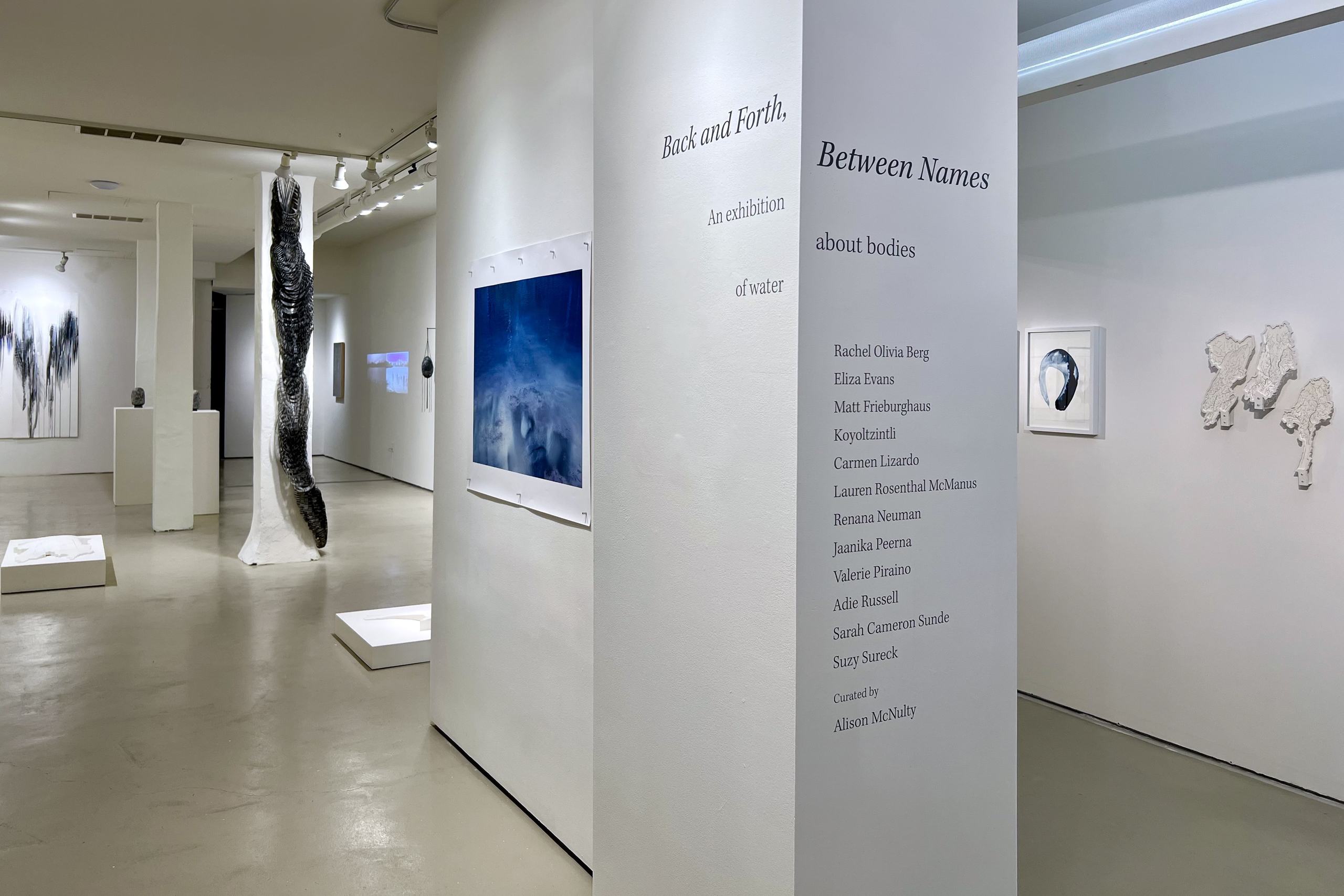















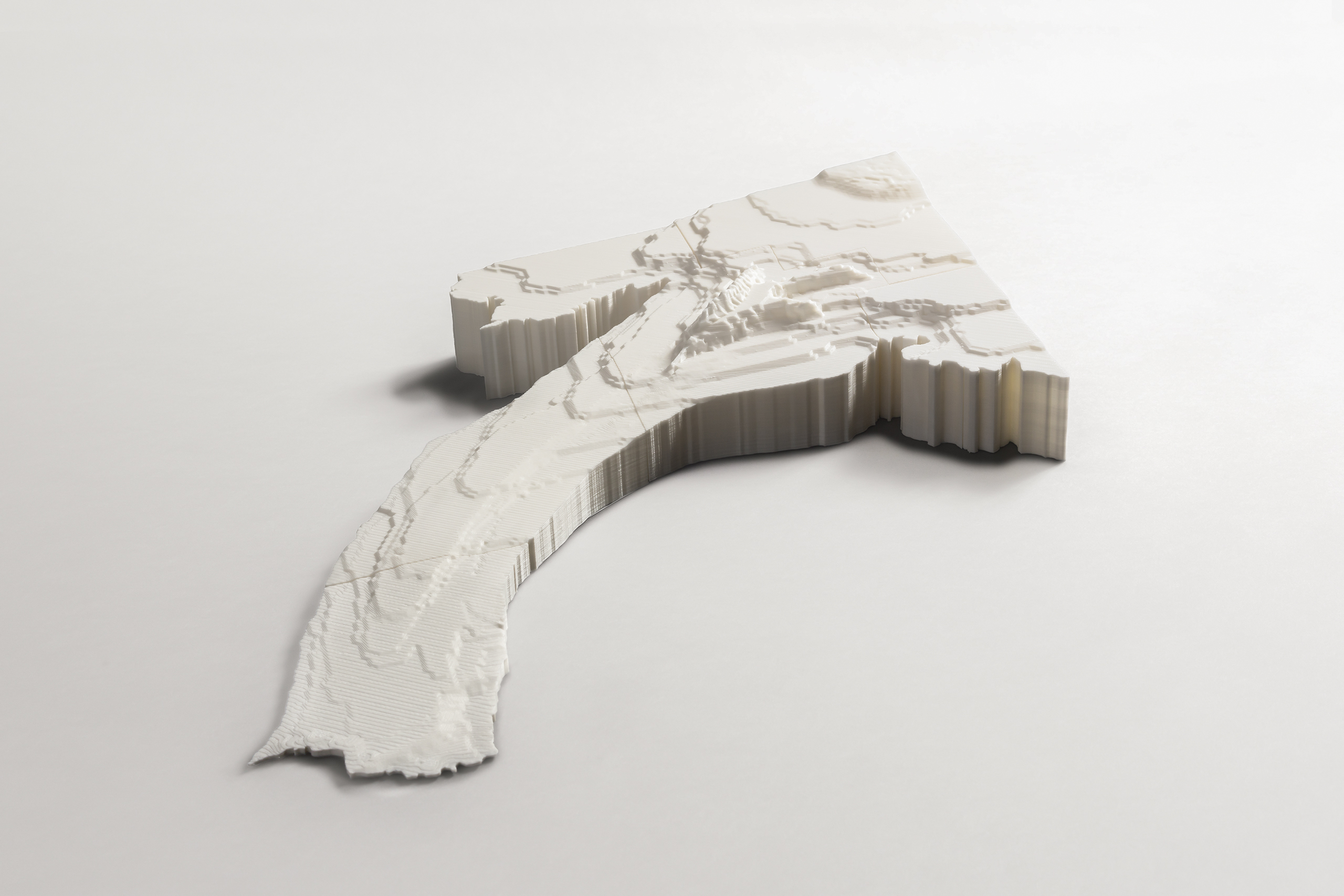

















The exhibtion guide includes materials lists and dates, along with the statements included below
Hanwi Wacipi Moh-He-Con-Nuck
Cyanotype on Cotton and Muslin
19.5 x 19.5”
My artistic practice is rooted in observation of the natural world and Indigenous values. I explore materials to create artworks in diverse artistic media that express Lakota ontologies, histories of living beings, human connections to environments, and investigation of natural cycles.
Using paint, wood, plaster, clay, metal, fabric, cyanotype, ink, and found objects in my artwork I create installations, paintings, and photographs with variations of imagery including Lakota symbols, mirrored and repeated forms, landscapes, skyscapes, constellations, plants, stones, and water. These elements embody the most ancient teachings of humanity and carry with them knowledge, truths, and realities that weave together stories both within and outside of traditional, contemporary, indigenous, and western ways of being and methodologies.
My art process aims to focus intersections between nature and personal “ways of being” addressing multiplicity of cultures and practices to allow space to reflect upon and learn about the mystery of life, death, and connections to Mitakyue Oyasin (All My Relations).
The title translates to: Moon Dance with The Waters that Never Stand Still
Cyanotype on Cotton and Muslin
19.5 x 19.5”
My artistic practice is rooted in observation of the natural world and Indigenous values. I explore materials to create artworks in diverse artistic media that express Lakota ontologies, histories of living beings, human connections to environments, and investigation of natural cycles.
Using paint, wood, plaster, clay, metal, fabric, cyanotype, ink, and found objects in my artwork I create installations, paintings, and photographs with variations of imagery including Lakota symbols, mirrored and repeated forms, landscapes, skyscapes, constellations, plants, stones, and water. These elements embody the most ancient teachings of humanity and carry with them knowledge, truths, and realities that weave together stories both within and outside of traditional, contemporary, indigenous, and western ways of being and methodologies.
My art process aims to focus intersections between nature and personal “ways of being” addressing multiplicity of cultures and practices to allow space to reflect upon and learn about the mystery of life, death, and connections to Mitakyue Oyasin (All My Relations).
The title translates to: Moon Dance with The Waters that Never Stand Still


Garden
Triptych of individually framed plants
13.5 x 16.25 x 4” (Installation dimensions variable)
By playing with the plane, surface, and unspoken invitations to interaction, this work undermines expectations about what one finds on and how one interacts with objects on a white wall. This space is no more contrived than environments we think of as more natural.
Triptych of individually framed plants
13.5 x 16.25 x 4” (Installation dimensions variable)
By playing with the plane, surface, and unspoken invitations to interaction, this work undermines expectations about what one finds on and how one interacts with objects on a white wall. This space is no more contrived than environments we think of as more natural.










Ghosts of Icebergs
Watercolor
11 x 14”
The Ghosts of Icebergs series depicts the shapes of icebergs from real images as witnessed in the high Arctic. The qualities and structure of each berg is only slightly hinted at with its reflection in Arctic waters. These paintings are like portraits of ice that is most likely long gone or has greatly changed due to melt since they were recorded. Although this is a normal process, the rate in which glaciers are melting and calving icebergs is greater than ever due to climate change.
Watercolor
11 x 14”
The Ghosts of Icebergs series depicts the shapes of icebergs from real images as witnessed in the high Arctic. The qualities and structure of each berg is only slightly hinted at with its reflection in Arctic waters. These paintings are like portraits of ice that is most likely long gone or has greatly changed due to melt since they were recorded. Although this is a normal process, the rate in which glaciers are melting and calving icebergs is greater than ever due to climate change.




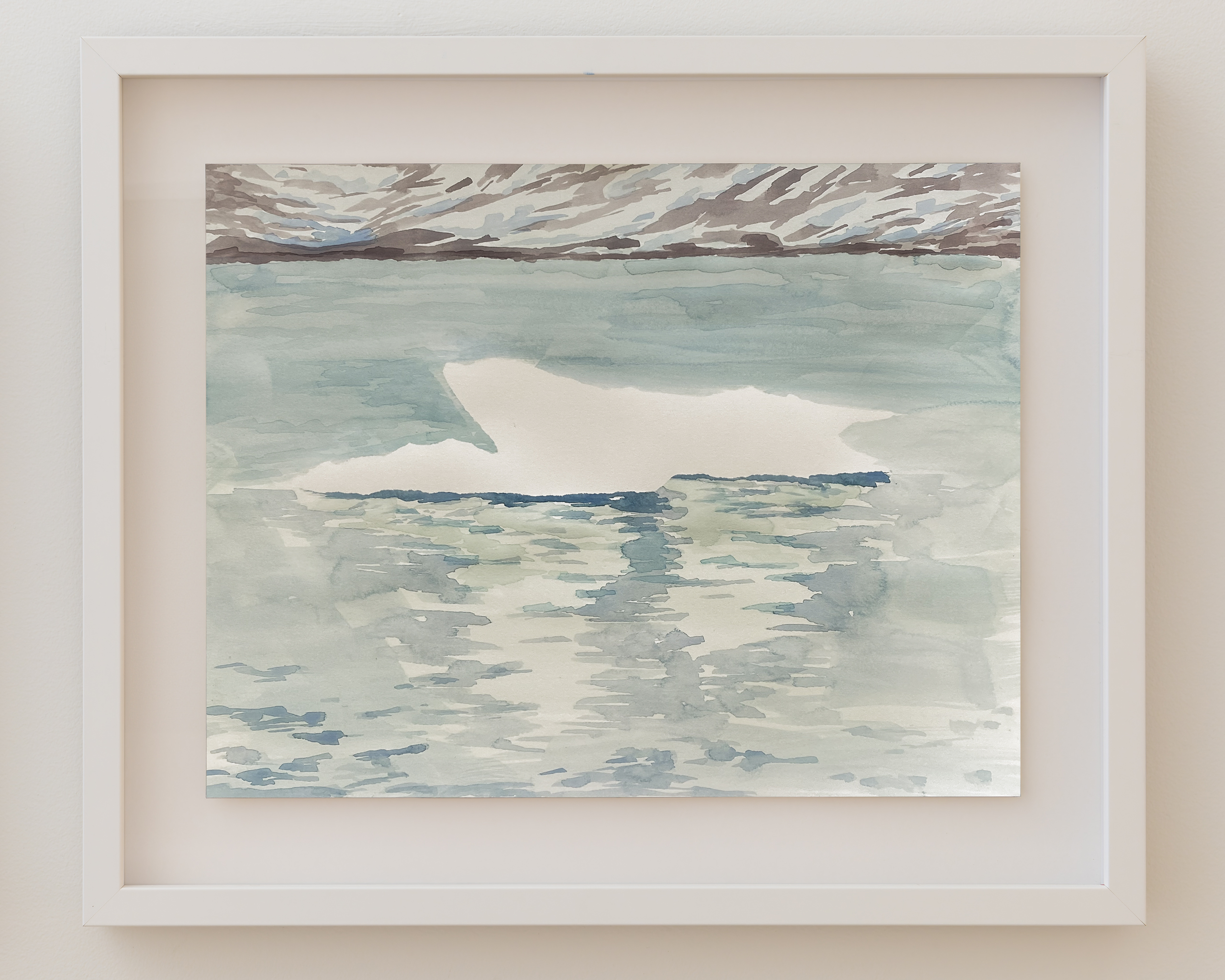

Tongue of Ice
PLA (polylactic acid)
4 x 16.5 x 26.5”
Tongue of Ice is a scale 3D printed model of Skaftafellsjökull in southern Iceland. It is a glacier tongue of the greater Vatnajökull icecap. The model is constructed as if a large arrow pointing in the direction of retreat, a present day reality for all glaciers in Iceland.
PLA (polylactic acid)
4 x 16.5 x 26.5”
Tongue of Ice is a scale 3D printed model of Skaftafellsjökull in southern Iceland. It is a glacier tongue of the greater Vatnajökull icecap. The model is constructed as if a large arrow pointing in the direction of retreat, a present day reality for all glaciers in Iceland.

Photo courtesy Zachary Skinner
Chatter
PLA (polylactic acid)
42 x 24 x 3”
Fourteen individual 3D prints create a shape outlining the Hudson Estuary. On the surface is chatter marks and striations that resemble marks found on rocky surfaces across the Hudson Valley that provide evidence of a Hudson Valley glacier. The gaps between pieces run north/south and east/west while the direction of the marks (when installed in the ground) run approximately 30 degrees west of south, the direction of movement of the Laurentide ice sheet as it sculpted the valley during the last ice age.
PLA (polylactic acid)
42 x 24 x 3”
Fourteen individual 3D prints create a shape outlining the Hudson Estuary. On the surface is chatter marks and striations that resemble marks found on rocky surfaces across the Hudson Valley that provide evidence of a Hudson Valley glacier. The gaps between pieces run north/south and east/west while the direction of the marks (when installed in the ground) run approximately 30 degrees west of south, the direction of movement of the Laurentide ice sheet as it sculpted the valley during the last ice age.


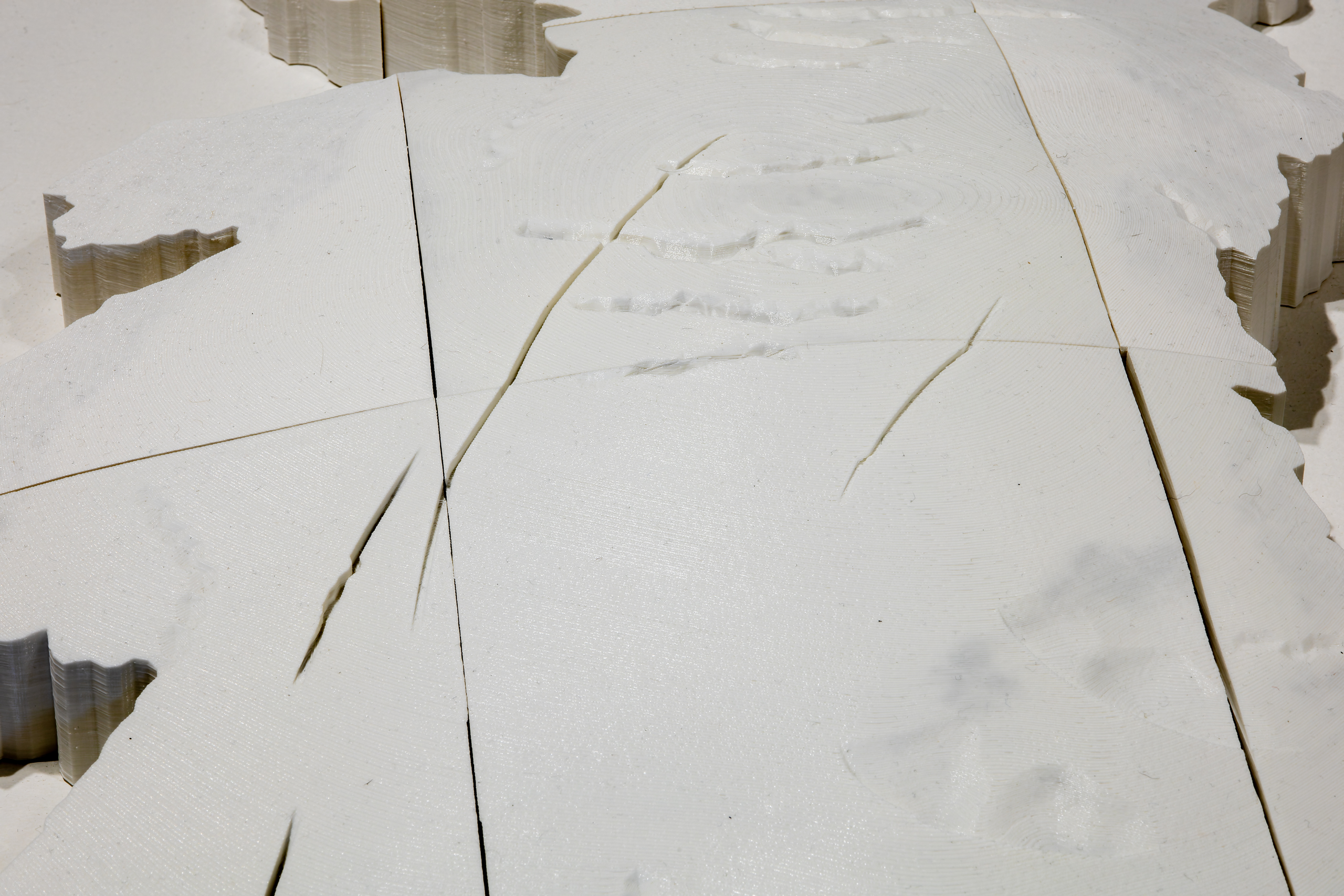

Untitled (For Toshiko, triple water whistle)
Ceramic and seeds
44 x 32 x 8” (Installation dimensions variable)
I started making pre-columbian instruments from a place of grief, making and hearing them taught me about grief, as the environmentalist of the soul. It healed something in me, and since then, making has turned into inquiry: When were these instruments played, what rituals enveloped them, how did their rites of passages, and funerary rites sound? In addition, I also explore pathways for indigenous and diasporic communities to reclaim these technologies, challenging colonial narratives through the essential act of listening.
Through crafting these instruments, I stitch together fragmented stories and revive one of the oldest and most obscure sonic heritage--Abya Yala's legacy. I seek guidance from celestial constellations as I shape flute beings, water whistle beings, rattle beings, serpent beings--each endowed with unique patterns and frequencies. These inter-dimensional mechanisms are imbued with sonic codes, they are ancient future technologies, carrying memory about land and self.
Ceramic and seeds
44 x 32 x 8” (Installation dimensions variable)
I started making pre-columbian instruments from a place of grief, making and hearing them taught me about grief, as the environmentalist of the soul. It healed something in me, and since then, making has turned into inquiry: When were these instruments played, what rituals enveloped them, how did their rites of passages, and funerary rites sound? In addition, I also explore pathways for indigenous and diasporic communities to reclaim these technologies, challenging colonial narratives through the essential act of listening.
Through crafting these instruments, I stitch together fragmented stories and revive one of the oldest and most obscure sonic heritage--Abya Yala's legacy. I seek guidance from celestial constellations as I shape flute beings, water whistle beings, rattle beings, serpent beings--each endowed with unique patterns and frequencies. These inter-dimensional mechanisms are imbued with sonic codes, they are ancient future technologies, carrying memory about land and self.




Koyoltzintli playing
Untitled (For Toshiko, triple water whistle)
Untitled (For Toshiko, triple water whistle)
To Swallow a River: Migrant Yola-Boat
Digital print with crystals on panel
30 x 72”
This work delves into the arduous journey of immigrants, encapsulated in the image of a Dominican homemade boat known as a "yola." These makeshift vessels, often overfilled with migrants, attempt the dangerous sea crossing to Puerto Rico and arrive ultimately to America. The central image, sourced from a found Dominican newspaper clipping, depicts a yola just before departure.
A solitary figure, silhouetted and filled with a pattern inspired by the ironwork of my childhood home in the Dominican Republic, is an emblem of the weight carried from the vast memories of the home left behind. This figure captures the dichotomy of hope and peril, embodying immigrants' dangerous yet hopeful quest. Crystals placed within the piece represent this dream, evoking the brightness of stars as guidance in the sublimity of the dark sea, leaving what once was called home for the idea of obtaining a glimmer into a dream that, for many, is reality marked by alienation, segregation, and omission.
Migrant Yola-Boat reflects the physical and emotional trials of these migrants and invites viewers to contemplate broader themes of identity and displacement. The work speaks to the struggles of immigrants, illustrating the past, present, and ongoing immigration challenges in America today.
Digital print with crystals on panel
30 x 72”
This work delves into the arduous journey of immigrants, encapsulated in the image of a Dominican homemade boat known as a "yola." These makeshift vessels, often overfilled with migrants, attempt the dangerous sea crossing to Puerto Rico and arrive ultimately to America. The central image, sourced from a found Dominican newspaper clipping, depicts a yola just before departure.
A solitary figure, silhouetted and filled with a pattern inspired by the ironwork of my childhood home in the Dominican Republic, is an emblem of the weight carried from the vast memories of the home left behind. This figure captures the dichotomy of hope and peril, embodying immigrants' dangerous yet hopeful quest. Crystals placed within the piece represent this dream, evoking the brightness of stars as guidance in the sublimity of the dark sea, leaving what once was called home for the idea of obtaining a glimmer into a dream that, for many, is reality marked by alienation, segregation, and omission.
Migrant Yola-Boat reflects the physical and emotional trials of these migrants and invites viewers to contemplate broader themes of identity and displacement. The work speaks to the struggles of immigrants, illustrating the past, present, and ongoing immigration challenges in America today.



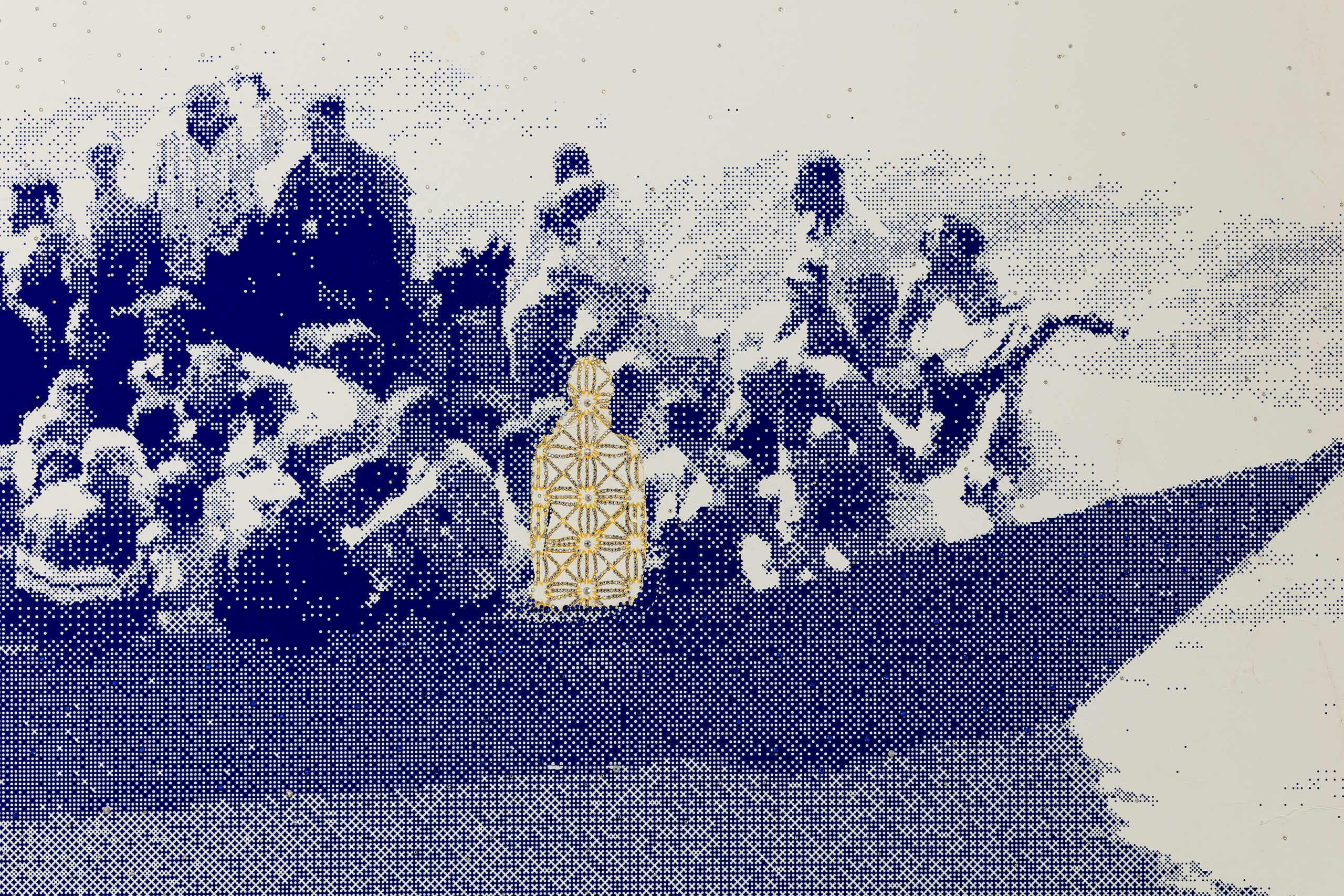


To Swallow a River: Archetype with Boat and Chain and To Swallow a River: Archetype Floating in Gold
Digital print on transparency in gold leaf on panel
24 x 36"
In this work, I act as an archivist, researching public-domain images of unidentified African American women to reinterpret turn-of-the-century photographs. This work highlights the cultural biases in historical records and the pervasive nature of racial and gender discrimination that have obscured women's identities. The term "unidentified women" in the context of African American women reveals much about the social and historical constructs of that time, reflecting a broader concept in the dual erasure of gender and race.
My artistic process was born from a personal space. For over a decade, I have lived with dozens of postcards of public domain images from the National Library of Congress of unidentified African American women from the turn of the century. These postcards hung on the walls in my darkroom alongside personal ancestral documents and photographs that have organically emerged from their silence, permeating my life. Social invisibility, the dissolution of identity, and the quest to create a portrait of a woman who dared to exist without a trace of history became a central departure in this work.
This focus is reflected in my practice through the physical form of the artwork. I preserved the postcards and found images as precious photographs, honoring their existence. Although they were items I could easily find, these particular images carried the history of a life lived within them, extending to all those without one. I photocopied these images and floated them in water with gold leaf, objects, paint, and fabric, creating ephemeral paintings and collages captured through photography before their dissolution.
The final images are created by further collaging gold leaf on the back of transparencies, constructing another layer of history through the making process, and creating layered portraits made of non-repeatable steps. Although the pictures may come from the same matrix, they live in a related but unique space and are no longer mere documents. They now represent the picture of every woman looked at but never seen.
Digital print on transparency in gold leaf on panel
24 x 36"
In this work, I act as an archivist, researching public-domain images of unidentified African American women to reinterpret turn-of-the-century photographs. This work highlights the cultural biases in historical records and the pervasive nature of racial and gender discrimination that have obscured women's identities. The term "unidentified women" in the context of African American women reveals much about the social and historical constructs of that time, reflecting a broader concept in the dual erasure of gender and race.
My artistic process was born from a personal space. For over a decade, I have lived with dozens of postcards of public domain images from the National Library of Congress of unidentified African American women from the turn of the century. These postcards hung on the walls in my darkroom alongside personal ancestral documents and photographs that have organically emerged from their silence, permeating my life. Social invisibility, the dissolution of identity, and the quest to create a portrait of a woman who dared to exist without a trace of history became a central departure in this work.
This focus is reflected in my practice through the physical form of the artwork. I preserved the postcards and found images as precious photographs, honoring their existence. Although they were items I could easily find, these particular images carried the history of a life lived within them, extending to all those without one. I photocopied these images and floated them in water with gold leaf, objects, paint, and fabric, creating ephemeral paintings and collages captured through photography before their dissolution.
The final images are created by further collaging gold leaf on the back of transparencies, constructing another layer of history through the making process, and creating layered portraits made of non-repeatable steps. Although the pictures may come from the same matrix, they live in a related but unique space and are no longer mere documents. They now represent the picture of every woman looked at but never seen.






To Swallow a River: Entwined
Digital print on silk organza
12 x 14”
This work is printed on a translucent, fragile, floating fabric that unravels over time, creating an everchanging image that folds and moves like the sea. This material choice symbolizes the delicate and constantly shifting nature of the immigrant experience. The fabric's movement and gradual unraveling mirror the immigrant’s journey, which is marked by continuous change, adaptation, and the relentless passage of time. The image underscores the transformation as individuals navigate the treacherous waters of immigration, seeking to maintain their sense of self while forging new paths in unfamiliar territories. The boat on the mouth carries the weight of unspoken stories hidden from mainstream society, reinforcing feelings of melancholy, isolation, and separation from one's homeland, encapsulating the fear and desperation often accompanying the decision to leave one’s homeland. This fear is intertwined with the hope for a better future, creating a complex emotional landscape.
Digital print on silk organza
12 x 14”
This work is printed on a translucent, fragile, floating fabric that unravels over time, creating an everchanging image that folds and moves like the sea. This material choice symbolizes the delicate and constantly shifting nature of the immigrant experience. The fabric's movement and gradual unraveling mirror the immigrant’s journey, which is marked by continuous change, adaptation, and the relentless passage of time. The image underscores the transformation as individuals navigate the treacherous waters of immigration, seeking to maintain their sense of self while forging new paths in unfamiliar territories. The boat on the mouth carries the weight of unspoken stories hidden from mainstream society, reinforcing feelings of melancholy, isolation, and separation from one's homeland, encapsulating the fear and desperation often accompanying the decision to leave one’s homeland. This fear is intertwined with the hope for a better future, creating a complex emotional landscape.


To Swallow a River: Seeing the Bottom Blue
Digital print on paper from video still
44 x 36”
The sea swallowed me at the beach, and I couldn’t swim. The seabed revealed itself as I sank, and a surprising calmness washed over me in those dangerous waters. The waves swayed me aggressively until I somehow drifted and found my way to the shore.
This photograph captures this beach on the Dominican Republic's east coast, combined with a separate image—a self-portrait of my reflection in the water and my face pressed beneath a piece of glass. The photos were taken the day before, and the waters were calm then, in stark contrast to the following day. At the beginning of this year, I merged these two images by projecting them onto translucent fabric in an unconscious act of processing; seeing them together, I realized they belonged as one. The projection seemed as fleeting as my memory of the waves, and the faint recollection of that impermanent moment resurfaced as a tangible reflection of it. I wanted to hold that moment. I rephotographed this projection, capturing the disrupted illusion caused by the light filtering through the windows, resembling that of the glimmer on a calm shore. This resulted in a corporeal print, transforming a private and fragmented experience into a unified form, an effort to understand my metaphoric relationship with the sea. Although my methodology is process-based, this work is not a process documentation. It is a document of truth, created from archives of my memories. It is a story whose ramifications extend to global issues of loss and is now a public record of this account.
Digital print on paper from video still
44 x 36”
The sea swallowed me at the beach, and I couldn’t swim. The seabed revealed itself as I sank, and a surprising calmness washed over me in those dangerous waters. The waves swayed me aggressively until I somehow drifted and found my way to the shore.
This photograph captures this beach on the Dominican Republic's east coast, combined with a separate image—a self-portrait of my reflection in the water and my face pressed beneath a piece of glass. The photos were taken the day before, and the waters were calm then, in stark contrast to the following day. At the beginning of this year, I merged these two images by projecting them onto translucent fabric in an unconscious act of processing; seeing them together, I realized they belonged as one. The projection seemed as fleeting as my memory of the waves, and the faint recollection of that impermanent moment resurfaced as a tangible reflection of it. I wanted to hold that moment. I rephotographed this projection, capturing the disrupted illusion caused by the light filtering through the windows, resembling that of the glimmer on a calm shore. This resulted in a corporeal print, transforming a private and fragmented experience into a unified form, an effort to understand my metaphoric relationship with the sea. Although my methodology is process-based, this work is not a process documentation. It is a document of truth, created from archives of my memories. It is a story whose ramifications extend to global issues of loss and is now a public record of this account.


Hydrologies from the Hudson Watershed (Rondout, Hudson-Wappinger, Lower Hudson)
Hand-cut watercolor paper, wood, steel, paint
16 x 8”
13.5 x 9.5”
16 x 8”
These paper works are sensual interpretations of hydrological data. By eliminating all of the man-made structures that usually inform our location in space, these free-floating hydrologies leave only the river basin to contemplate. What at first might seem disorienting leads to the possibility of re-orienting, of identifying with and within these natural systems.
Hand-cut watercolor paper, wood, steel, paint
16 x 8”
13.5 x 9.5”
16 x 8”
These paper works are sensual interpretations of hydrological data. By eliminating all of the man-made structures that usually inform our location in space, these free-floating hydrologies leave only the river basin to contemplate. What at first might seem disorienting leads to the possibility of re-orienting, of identifying with and within these natural systems.





Rock Drawings from the Finger Lakes (Cayuga Lake, Canadaigua Lake, and Hemlock Lake)
Ground rock, water, & gum arabic on paper
38 x 30” (Framed)
28 x 22” (Framed)
21 x 17” (Framed)
These drawings begin with spatial data – hydrological and topographical blueprints –, which are then layered with local artifacts of a human connection to place – rocks collected along lakes and streams. I grind the rocks into pigment, then mix it with water and gum arabic to make watercolor paint. By reframing our boundaries and our relationships with the world, these works highlight our inherent interconnectedness and interdependence.
Ground rock, water, & gum arabic on paper
38 x 30” (Framed)
28 x 22” (Framed)
21 x 17” (Framed)
These drawings begin with spatial data – hydrological and topographical blueprints –, which are then layered with local artifacts of a human connection to place – rocks collected along lakes and streams. I grind the rocks into pigment, then mix it with water and gum arabic to make watercolor paint. By reframing our boundaries and our relationships with the world, these works highlight our inherent interconnectedness and interdependence.




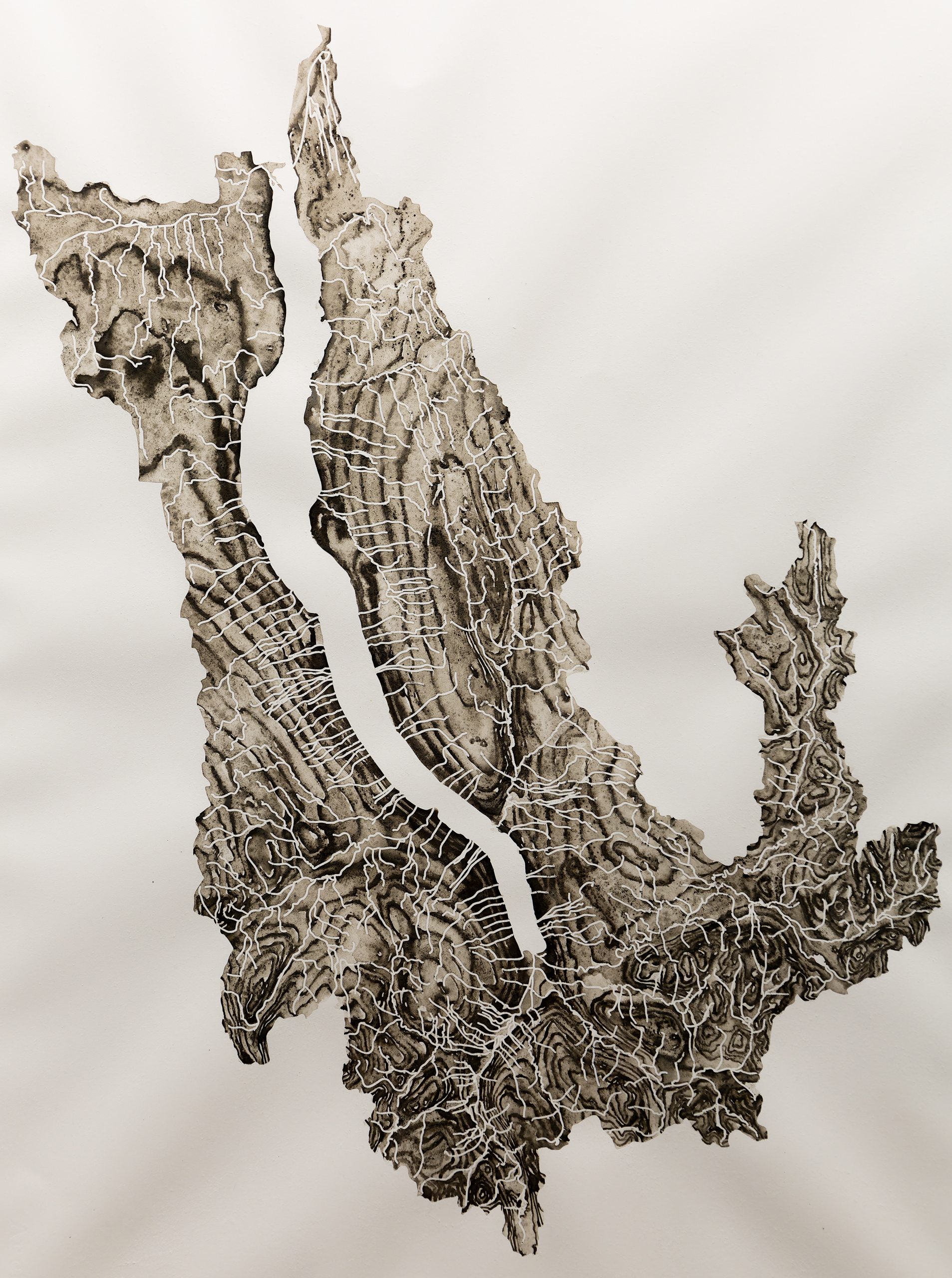


Overflow and Hollow
Hand-drawn animation projection, dome mirror
19.5 x 19.5 x 8.5” (Installation dimensions variable)
2-channel projections, black paint, graphite drawing, audio
5 minutes and 14 seconds on loop
The installation explores the power of water as a force of life, equality, and resistance. Water can trick boundaries, overcome them, no border is impenetrable to it. Human's desire to control water manifests in drawing borders, digging canals, building dams, legislating - trying to control the uncontrollable. It is the source of life and a purifying force. For me, it also evokes the turmoils and storms of the self. All of these are weaved together to think about who has control, and what can we do to redistribute it.
Music and audio design - Chanan Ben Simon. Voice: Chanan Ben Simon, Noa Fort, Renana Neuman.
Hand-drawn animation projection, dome mirror
19.5 x 19.5 x 8.5” (Installation dimensions variable)
2-channel projections, black paint, graphite drawing, audio
5 minutes and 14 seconds on loop
The installation explores the power of water as a force of life, equality, and resistance. Water can trick boundaries, overcome them, no border is impenetrable to it. Human's desire to control water manifests in drawing borders, digging canals, building dams, legislating - trying to control the uncontrollable. It is the source of life and a purifying force. For me, it also evokes the turmoils and storms of the self. All of these are weaved together to think about who has control, and what can we do to redistribute it.
Music and audio design - Chanan Ben Simon. Voice: Chanan Ben Simon, Noa Fort, Renana Neuman.





Spill in Newburgh
Pigment and ice on hand cut mylar, magnets, site specific wall work
Approx. 120 x 18 x 23” (Installation dimensions variable)
This wall-based sculpture consists of several identically shaped hand-made elements made from thin plastic, each cut with uniform cuts and each with paint eroded by ice and water across the surface. The work takes on different forms each time it is installed, with the pieces recycled and reused, then assembled and falling in different ways. For the artist, this mimics the fluidity of water and the way that the same mass of water can appear in different places across the world and in different forms.
Pigment and ice on hand cut mylar, magnets, site specific wall work
Approx. 120 x 18 x 23” (Installation dimensions variable)
This wall-based sculpture consists of several identically shaped hand-made elements made from thin plastic, each cut with uniform cuts and each with paint eroded by ice and water across the surface. The work takes on different forms each time it is installed, with the pieces recycled and reused, then assembled and falling in different ways. For the artist, this mimics the fluidity of water and the way that the same mass of water can appear in different places across the world and in different forms.





Ablation Zone 14-15-16
Pigment and ice on Yupo
80 x 90” (Three elements)
Ablation Zone series of drawings shares many elements with Peerna’s ongoing Glacier Elegy project. Each work in the series has been created with pigment pencils and ice. Peerna starts the drawings by first marking vertical pigment lines onto thin layer of plastic. She then methodically applies water or ice, causing the lines on the surface to melt and drip. There is an inherent natural element within the making of each work—the drawing only stops making itself when the water has dried. The ensuing drip marks on the works capture the moment when solid turns into liquid, drawing a visual parallel to the moment when ice melts into water. This series becomes a visual response to the witnessing of the rapid glacier melt around the earth due to the warming climate.
In the title the artist is pointing to the process of ablation of a glacier which refers to all processes that remove mass from a glacier.
Pigment and ice on Yupo
80 x 90” (Three elements)
Ablation Zone series of drawings shares many elements with Peerna’s ongoing Glacier Elegy project. Each work in the series has been created with pigment pencils and ice. Peerna starts the drawings by first marking vertical pigment lines onto thin layer of plastic. She then methodically applies water or ice, causing the lines on the surface to melt and drip. There is an inherent natural element within the making of each work—the drawing only stops making itself when the water has dried. The ensuing drip marks on the works capture the moment when solid turns into liquid, drawing a visual parallel to the moment when ice melts into water. This series becomes a visual response to the witnessing of the rapid glacier melt around the earth due to the warming climate.
In the title the artist is pointing to the process of ablation of a glacier which refers to all processes that remove mass from a glacier.


Glacial Ooze Newburgh
Pigment and ice on hand cut mylar, magnets
50 x 28 x 9”
This wall-based sculpture consists of two identically shaped hand-made elements made from thin plastic, each cut with uniform cuts and each with paint eroded by ice and water across the surface. The work takes on different forms each time it is installed, with the pieces recycled and reused, then assembled and falling in different ways.
Pigment and ice on hand cut mylar, magnets
50 x 28 x 9”
This wall-based sculpture consists of two identically shaped hand-made elements made from thin plastic, each cut with uniform cuts and each with paint eroded by ice and water across the surface. The work takes on different forms each time it is installed, with the pieces recycled and reused, then assembled and falling in different ways.


pieces of place
Polystyrene, epoxy clay, white dirt, twine, found metal, brass beads, nylon, fibers
Dimensions variable
Art allows me to collect “pieces of place.” As a Rwandan artist living outside my place of birth, I use art to process physical dislocation and cultural disorientation. My sculptures are carved out of foam blocks and covered with black epoxy clay. The surface is then manipulated to create a range of textures using a combination of molds, wet sanding, dry filing, burnishing and so on.
Molds are a method for finding “pieces of place” and include molds of fruit from the Global South bought Stateside, like jackfruit and bitter melon. Layers of white dirt are adhered throughout this process to achieve the look and feel of the passage of time. These new objects strengthen my understanding of home.
Polystyrene, epoxy clay, white dirt, twine, found metal, brass beads, nylon, fibers
Dimensions variable
Art allows me to collect “pieces of place.” As a Rwandan artist living outside my place of birth, I use art to process physical dislocation and cultural disorientation. My sculptures are carved out of foam blocks and covered with black epoxy clay. The surface is then manipulated to create a range of textures using a combination of molds, wet sanding, dry filing, burnishing and so on.
Molds are a method for finding “pieces of place” and include molds of fruit from the Global South bought Stateside, like jackfruit and bitter melon. Layers of white dirt are adhered throughout this process to achieve the look and feel of the passage of time. These new objects strengthen my understanding of home.














Origins 1 and Origins 2
Charcoal on Arches paper
52 x 36"
Origins 1 and 2 are pictures of both a specific site and an allegory of human positioning in space and time. The Catskill region, now well known for its desirability as a vacation destination, recreation spot, cultural center and real estate market, has a long, interconnected history as a site of production: stone, lumber, furs, food, and the romantic landscape painting of the Hudson River School. It was inhabited, utilized and embodied specific meaning for indigenous people for thousands of years. The mountains themselves were created over millennia during the Devonian period (419- 358 million years ago) from the erosion and uprising of another mountain range on the shores of a vast inland sea. At the edges of this sea the first plants emerged from the water, greening the earth and developing the proto trees which afforested the planet, absorbing carbon dioxide and cooling the atmosphere.
What does it mean to engage with landscape as an artist now? This place, with its layering of larger-than-human timescale, art history, municipal function and personal experience, is emblematic of that investigation. It contains multiple narratives while refusing subjective historical landscape motifs. The drawings are an invitation to consider our position in relation to the world around us, offering a space to enter into and be absorbed, rather than a scene to be looked at from across the divide.
Charcoal on Arches paper
52 x 36"
Origins 1 and 2 are pictures of both a specific site and an allegory of human positioning in space and time. The Catskill region, now well known for its desirability as a vacation destination, recreation spot, cultural center and real estate market, has a long, interconnected history as a site of production: stone, lumber, furs, food, and the romantic landscape painting of the Hudson River School. It was inhabited, utilized and embodied specific meaning for indigenous people for thousands of years. The mountains themselves were created over millennia during the Devonian period (419- 358 million years ago) from the erosion and uprising of another mountain range on the shores of a vast inland sea. At the edges of this sea the first plants emerged from the water, greening the earth and developing the proto trees which afforested the planet, absorbing carbon dioxide and cooling the atmosphere.
What does it mean to engage with landscape as an artist now? This place, with its layering of larger-than-human timescale, art history, municipal function and personal experience, is emblematic of that investigation. It contains multiple narratives while refusing subjective historical landscape motifs. The drawings are an invitation to consider our position in relation to the world around us, offering a space to enter into and be absorbed, rather than a scene to be looked at from across the divide.

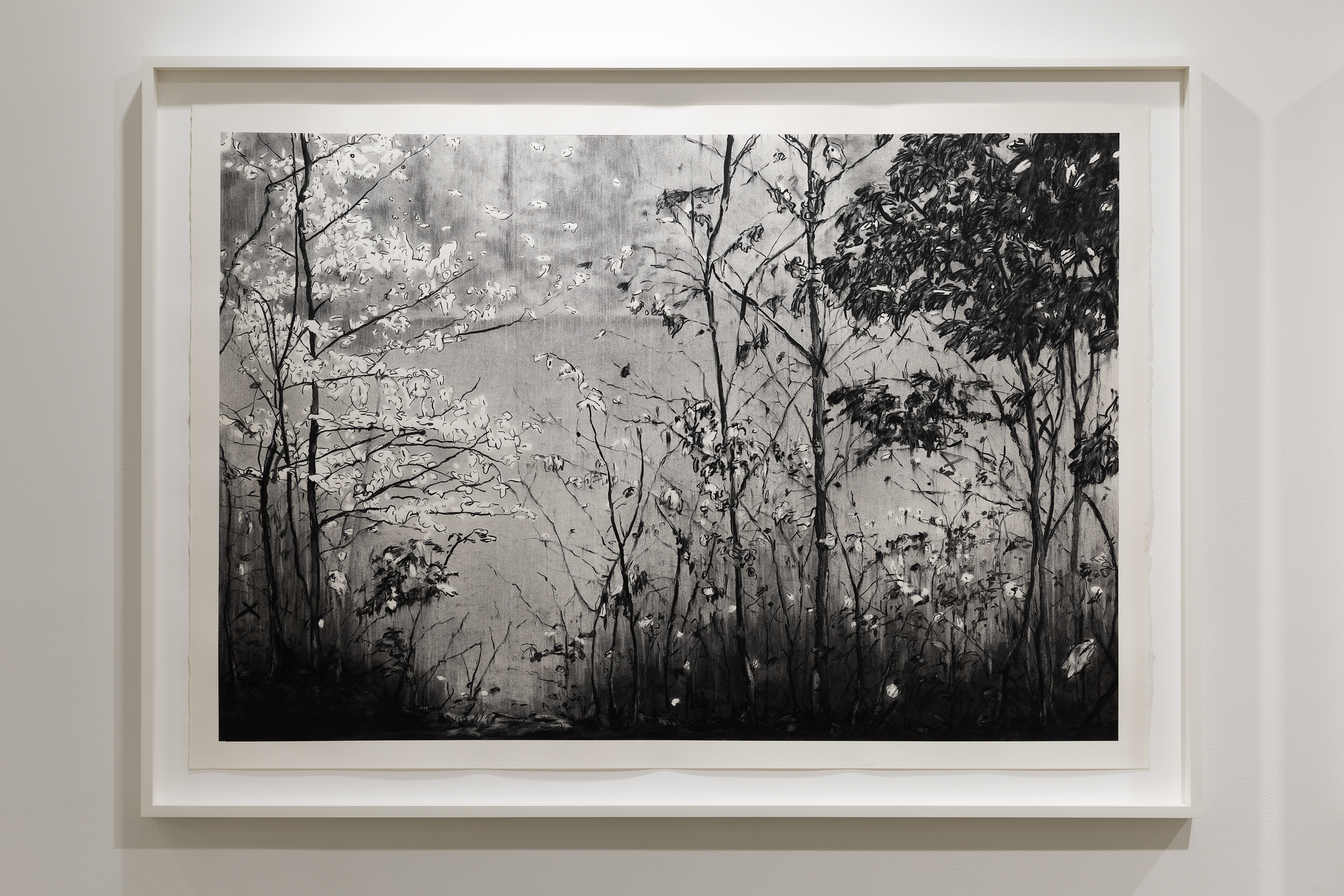



36.5 / New York Estuary
|
Live performance and durational video artwork 12 hours and 39 minutes Site-specific participatory performance, multi-channel HD durational video work with audio Ninth and final work in the series, 36.5 / A Durational Performance with the Sea (2013 - 2022) Artist Sarah Cameron Sunde stands in a tidal bay for a full tidal cycle, 12-13 hours, as water engulfs her body and then reveals it again. The public joins her. What began in 2013 as a poetic response to Hurricane Sandy’s impact on New York City grew into a complex, evolving series of participatory artworks involving thousands of people in communities around the world. Spanning nine years and six continents, Sunde's 36.5 series of nine works invites audiences to have a radically embodied experience with the sea, engaging them in conversations about deep time, sea-level rise, white-settler colonialism, and our contemporary relationship with water – as individuals, in community, as a civilization and as a species. The international performances were filmed in real-time in collaboration with a local film team, and subsequently turned into durational video artworks that are the same length as each performance. For this final work, Sunde returned to her home in New York City, and spent three years building a community-engaged process based at The Cove in Astoria, Queens. Over 175 people joined her to stand in the East River on September 14, 2022, with thousands watching from the shore and on the livestream which was broadcast around the city and world. At the same time, Sunde's 36.5 teams in the Netherlands, Bangladesh, Brazil, Kenya, and Aotearoa-New Zealand created satellite performances by standing in their local waters. 36.5 / New York Estuary was made in partnership with Works on Water, The Climate Museum, Arts Brookfield, Theater Mitu, New York University / The Skirball Center, Socrates Sculpture Park, Kin to the Cove, and many individuals. For a full list of contributors and more information, please see www.36pt5.org. |




STAND ON THE EDGE AND
FACE THE SEA
Optional instructions for participation when viewing this durational video work
Welcome to the Water.
Find a spot to stand or sit in the space.
Face the Sea.
You are there at the edge, where Land meets Sea.
Imagine Water rising slowly on your own body.
Let it in.
Stay in this spot long enough to feel a shift.
Take a break when you need it.
Walk around the gallery or to the closest body of water to where you stand now.
When you come back, notice how the Water levels have changed.
FACE THE SEA
Optional instructions for participation when viewing this durational video work
Welcome to the Water.
Find a spot to stand or sit in the space.
Face the Sea.
You are there at the edge, where Land meets Sea.
Imagine Water rising slowly on your own body.
Let it in.
Stay in this spot long enough to feel a shift.
Take a break when you need it.
Walk around the gallery or to the closest body of water to where you stand now.
When you come back, notice how the Water levels have changed.
Indigo Series
Inks and water on Fabriano paper
12 x 12” (Framed)
14 x 18” (Framed)
14 x 18” (Framed)
The Indigo Series conjures water’s fluidity and structure, translucency, and unpredictability. There is a dance of intention and chance between elemental happenings and gestures from my hand. Liquid indigo surrenders to evaporation, air, breath, and gravity, shifting from its initial place. The ink pieces may gesture to exuberance or grief, considering water as the source of life and nourishment, as well as cataclysmic devastation.
Inks and water on Fabriano paper
12 x 12” (Framed)
14 x 18” (Framed)
14 x 18” (Framed)
The Indigo Series conjures water’s fluidity and structure, translucency, and unpredictability. There is a dance of intention and chance between elemental happenings and gestures from my hand. Liquid indigo surrenders to evaporation, air, breath, and gravity, shifting from its initial place. The ink pieces may gesture to exuberance or grief, considering water as the source of life and nourishment, as well as cataclysmic devastation.






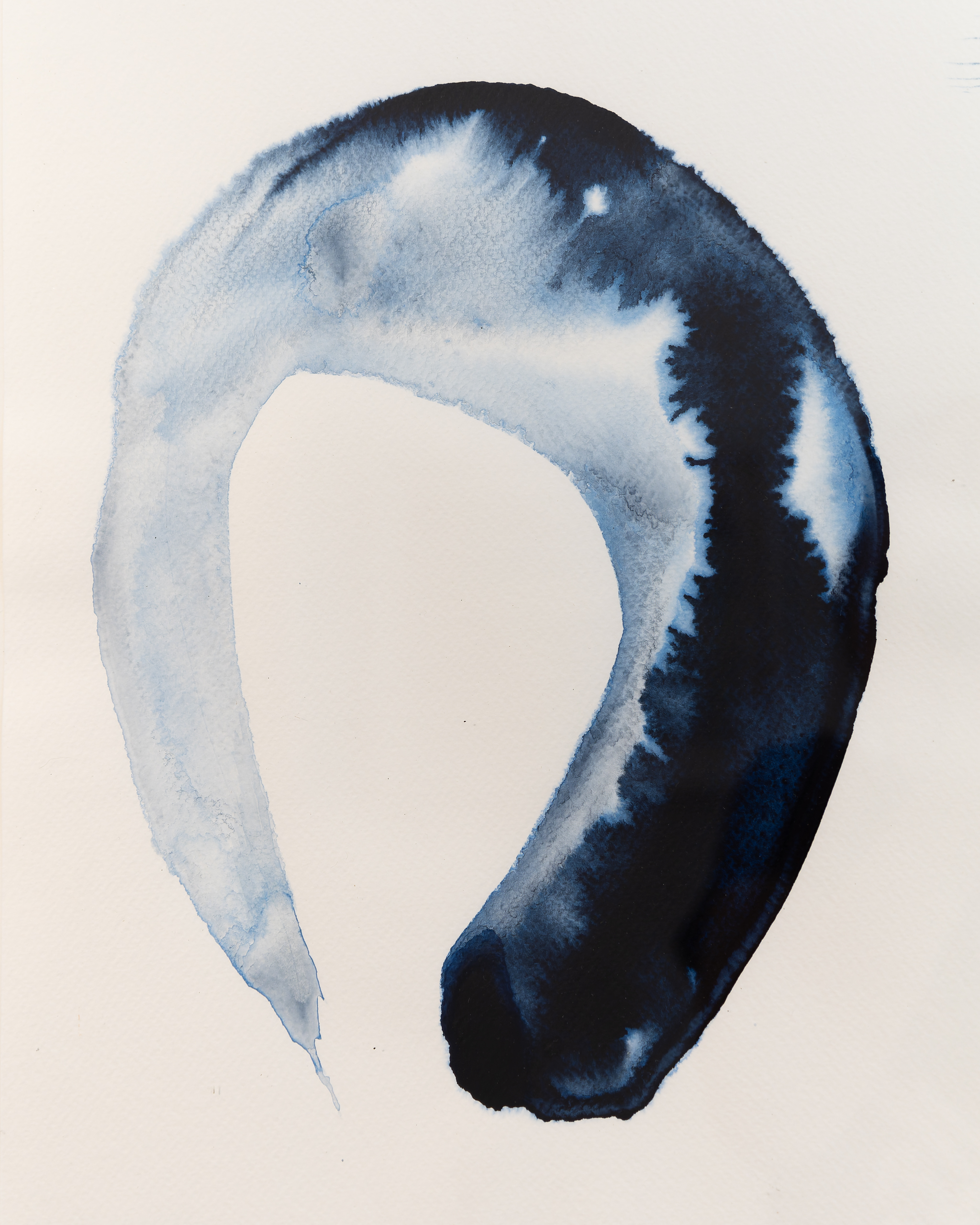
Light Play
Laser cut mylar of branch from human kidney, archival paper, light
18 x 18 x 4” (Framed)
18 x 18 x 4” (Framed)
8 x 12”
Branching systems can be found throughout nature, from microscopic to aerial view, suggesting an interdependent relation between the inner landscape of the body and the outer landscape of our environment. The Light Play Series works with a tributaries of the human kidney, our internal filtration system. A branching system like that of rivers, water ways and ice flow, its fluidity is in flux between reflection and shadow, responsive to light, breath and our movements.
Laser cut mylar of branch from human kidney, archival paper, light
18 x 18 x 4” (Framed)
18 x 18 x 4” (Framed)
8 x 12”
Branching systems can be found throughout nature, from microscopic to aerial view, suggesting an interdependent relation between the inner landscape of the body and the outer landscape of our environment. The Light Play Series works with a tributaries of the human kidney, our internal filtration system. A branching system like that of rivers, water ways and ice flow, its fluidity is in flux between reflection and shadow, responsive to light, breath and our movements.









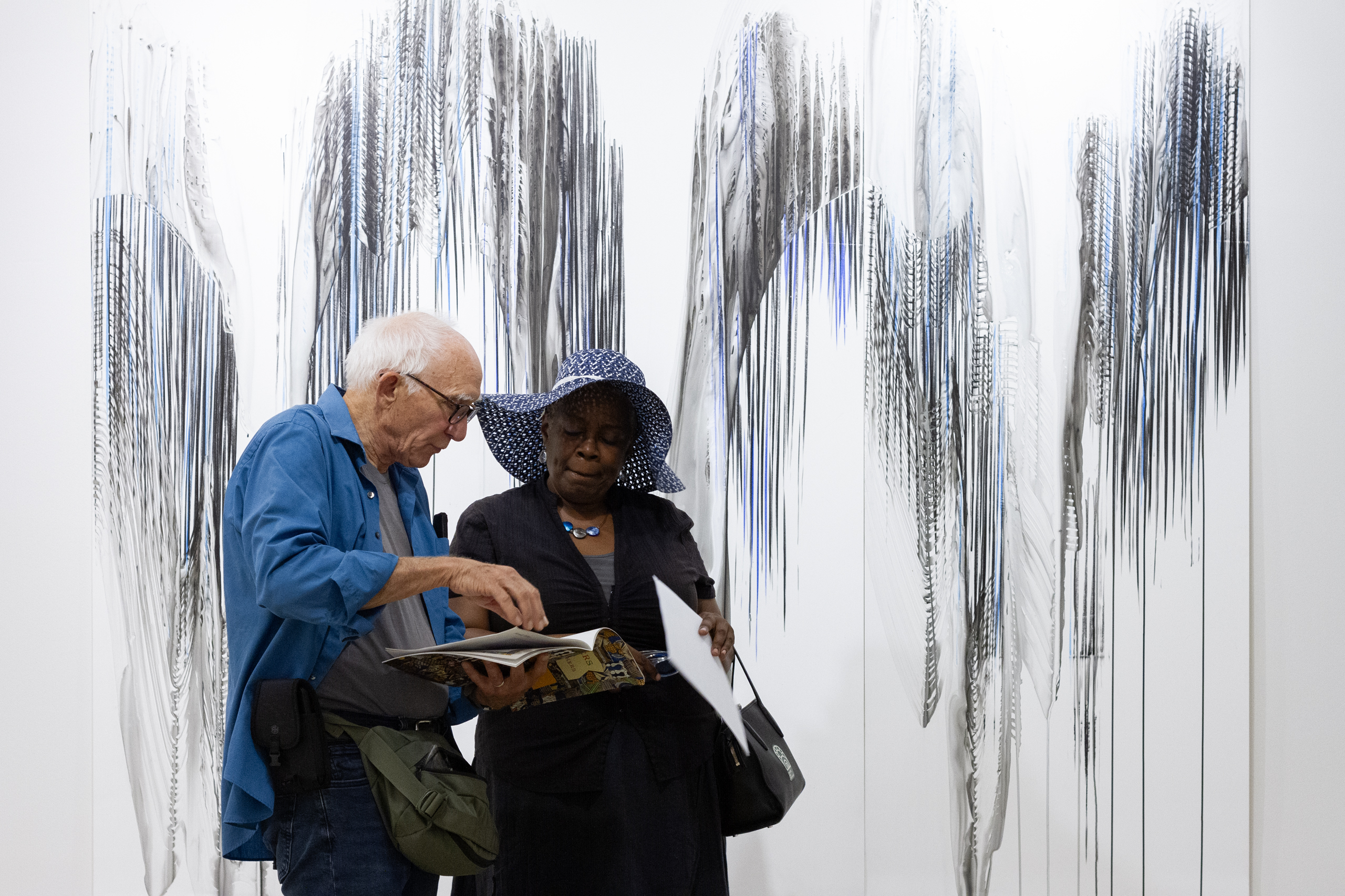



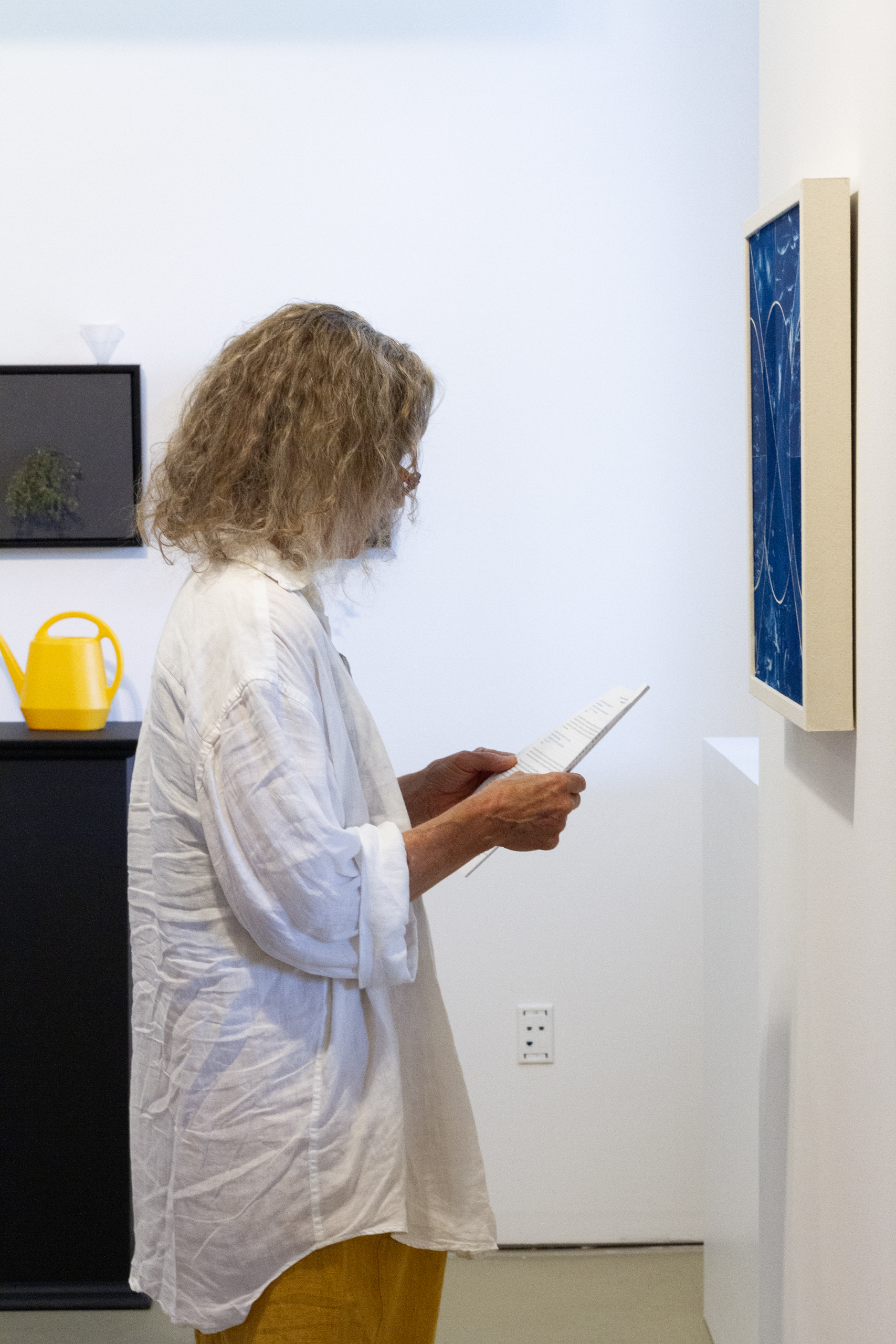
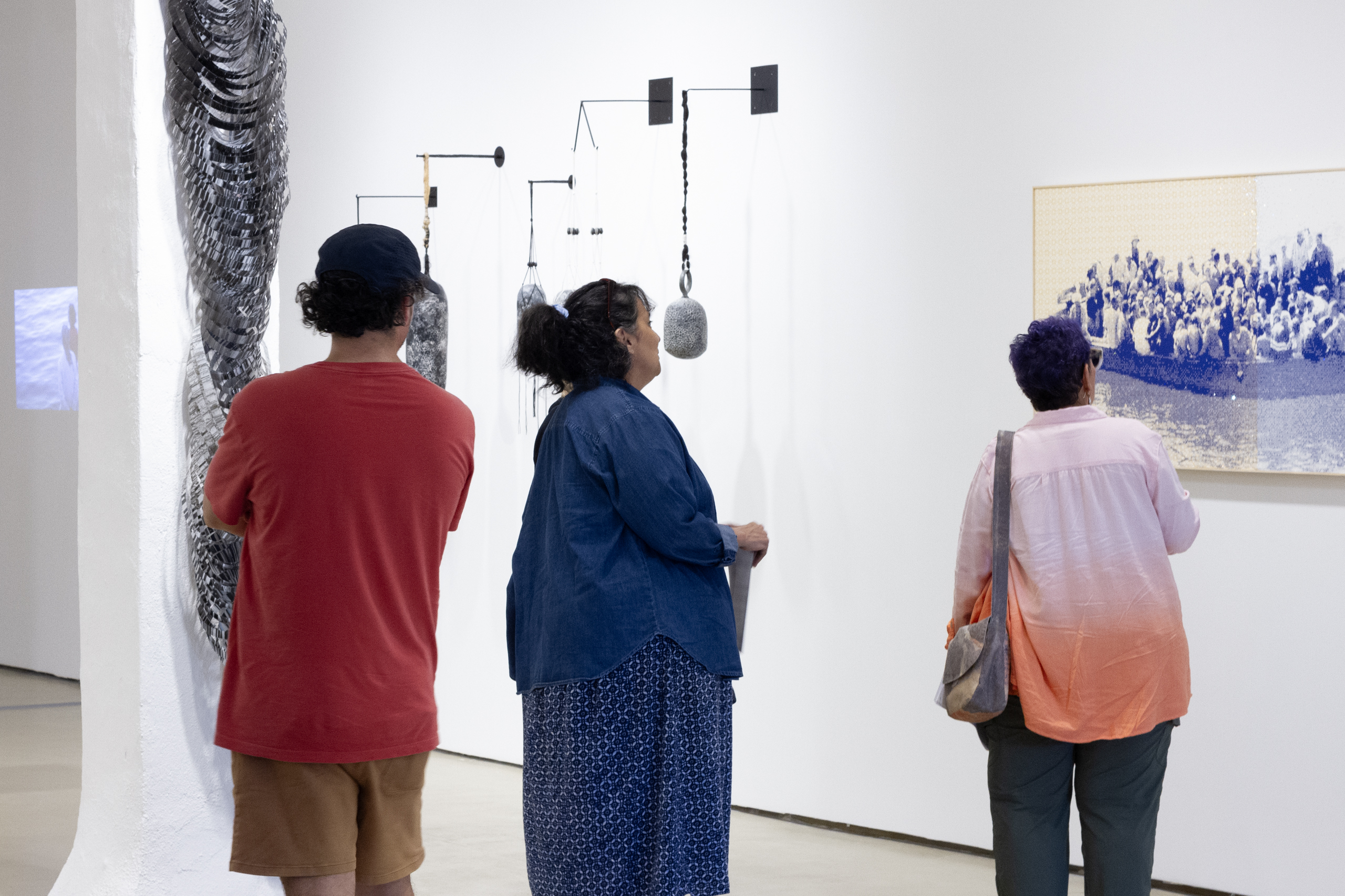









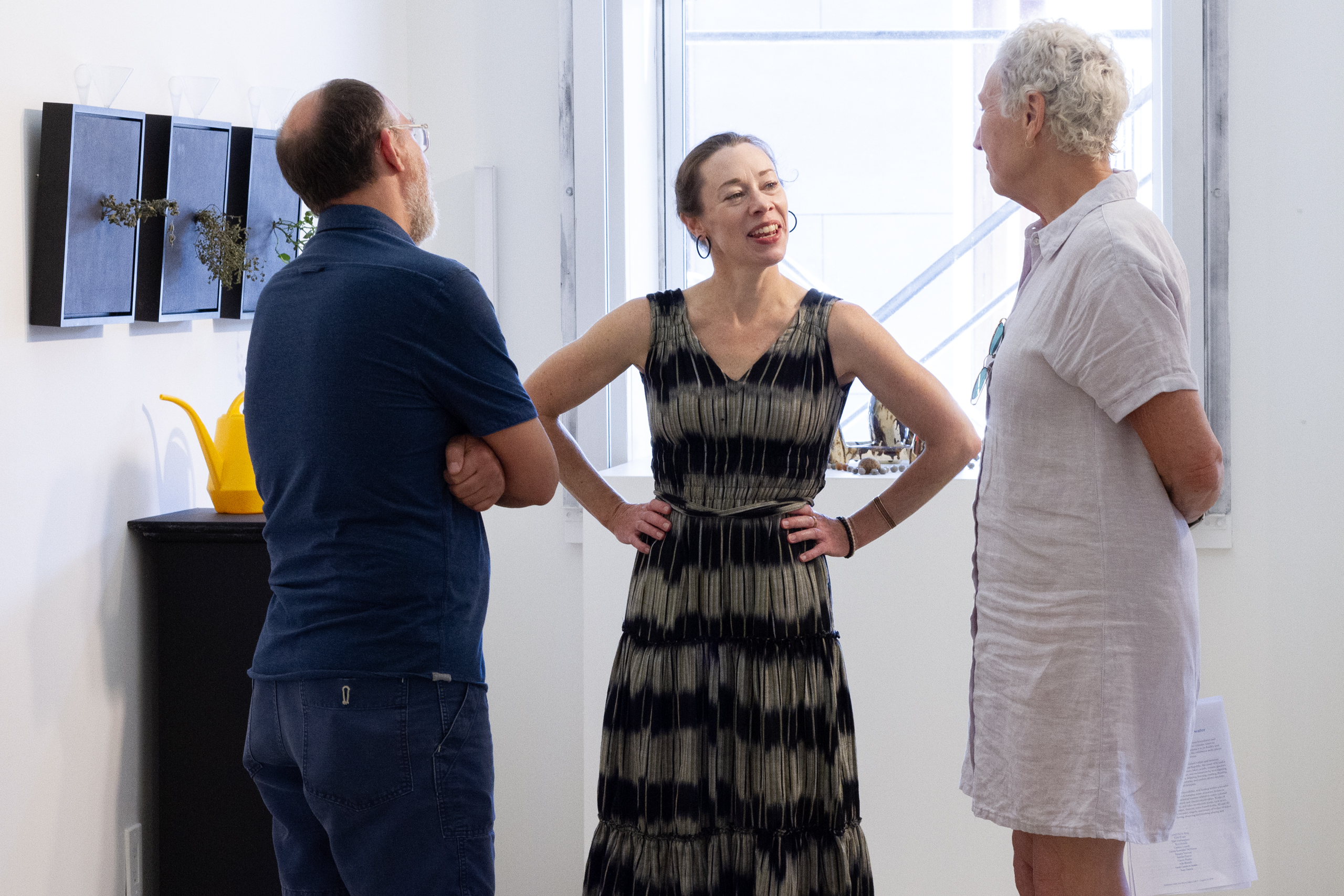



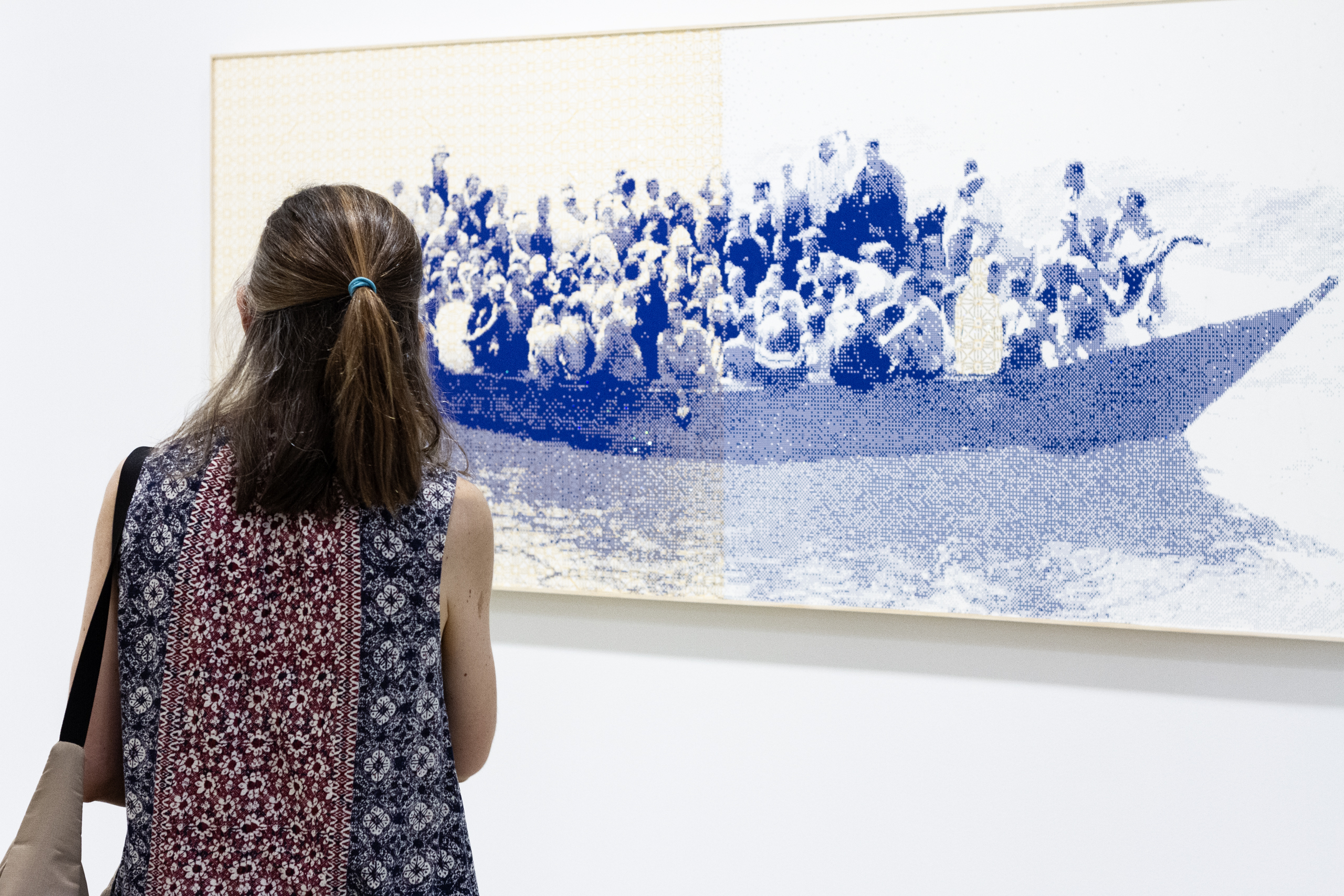









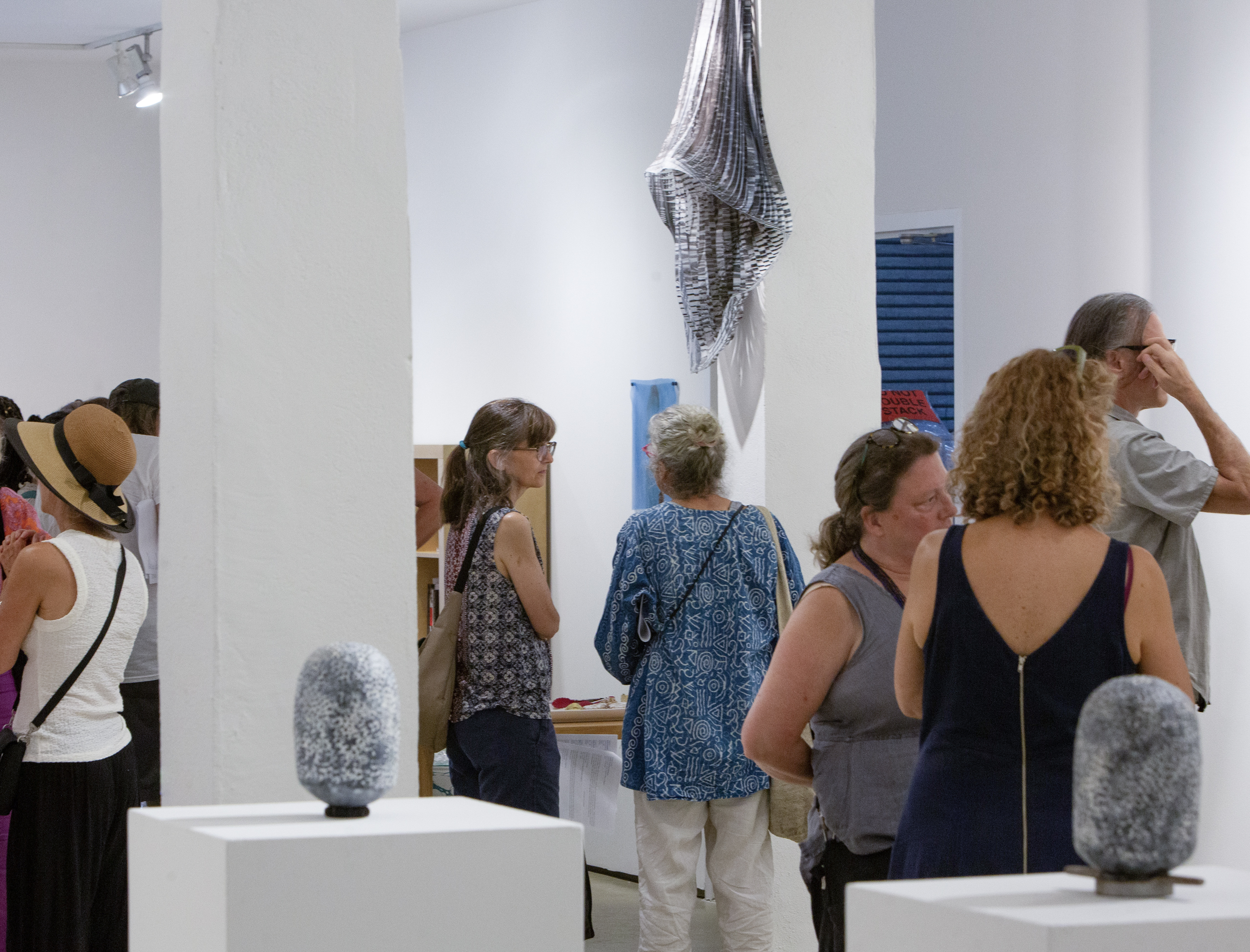












Ann Street Gallery’s summer exhibition and programming are made possible with support from the Dominican Sisters of Hope Ministry Fund and The M&T Charitable Foundation.

